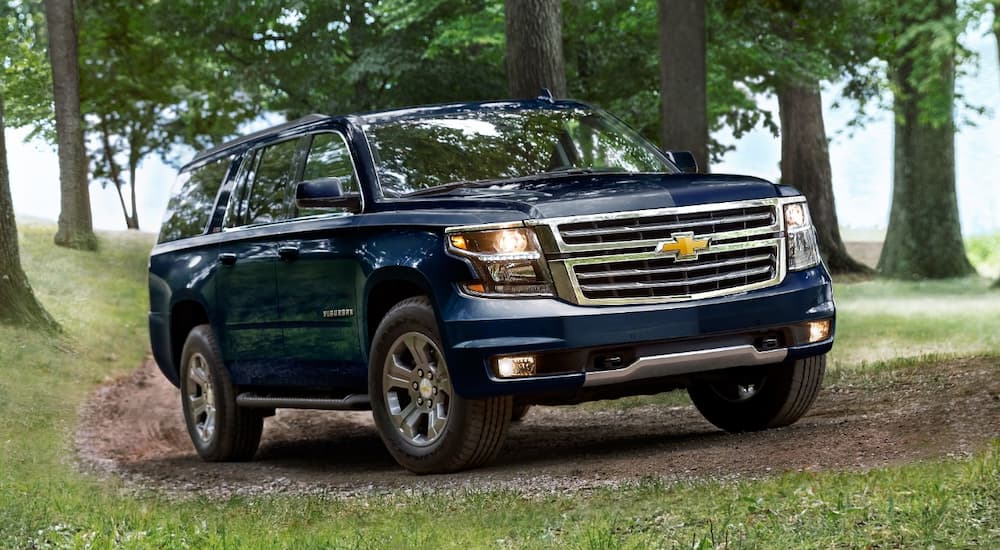You may be searching for a used car dealership that has plenty of inventory and competitive pricing on used Chevy models. If you are, don’t forget what comes before that dealer visit. Used vehicle buyers face more hurdles than those who go the new car route. Specifically, you need to discern a high-quality car from one that comes with future headaches and big repair bills. Here’s a shortcut: buy a Certified Pre-Owned (CPO) model.
CPO cars won’t plague you with doubts about mechanical soundness, and because most of them include a CARFAX Vehicle History Report, you’ll know its pedigree before signing on the dotted line. One of the better CPO programs in the industry is General Motors’ GM Certified. Rather than the tiered programs favored by other automakers, like Ford, GM’s includes a single set of criteria.
All candidate GM Certified vehicles receive the same 172-point inspection and meet identical age and mileage standards. That way, interested buyers won’t puzzle over ambiguous tiers like Ford’s Gold and Blue levels. Why does this matter? Buying a car is already complex enough, so splitting hairs with varying quality standards only creates confusion.
Easy isn’t always good, but in the car-buying arena, easy is a sanity saver. If you’re a CPO first-timer or you’re on the fence, consider these CPO benefits.
That Low-Mileage CPO Chevy Is Probably a Lease Return
If you come across a 3-year-old CPO Chevy with less than 36k on the odometer, it’s likely a lease return. According to consumer loan aggregator LendingTree, the average American car lease term is 36.7 months, regardless of credit score, and most leases include 12,000-mile annual mileage caps. Compare that to a traditional used vehicle loan, which averages 66.5 months—or over five years—and doesn’t include mileage restrictions. It’s clear that you’re far more likely to find off-lease cars on the CPO lot.
Off-lease CPO vehicles tend to sail through GM’s rigorous 172-point inspection because lessees take great care of their leased cars. Lease contracts clearly state acceptable wear-and-tear guidelines, and they impose costly penalties on drivers who turn in vehicles with excess damage or evidence of hard use. All lease returns undergo an inspection performed by a certified technician, and the lessee must pay for all repairs before surrendering the vehicle.
These strict standards act as a deterrent because lessees know that they’ll end up paying a hefty price if they violate their lease contract. Unfortunately, there’s no hiding excess wear-and-tear when the lease term ends. Also, if lessees exceed the mileage allowance, they’ll end up paying a per-mile premium.
What does this mean for CPO buyers? If that low mileage, newer model year CPO car is for sale on the dealer’s lot, you can be sure it’s a high-quality option.

CPO Inventories Are Large and Diverse
While the vast majority of buyers opt for a traditional purchase, over 3.5 million Americans choose to lease a new car every year, which translates to around 25% of buyers. Some will elect to purchase their car at the end of the lease term, but the vast majority will swap it for another brand-new model. The result? Tons of CPO vehicles flood the used car market every year, giving buyers a generous inventory of options.
Also, some shoppers often choose a less expensive lease so they can move up a trim level (or two), so high-end trims can also be found on the CPO lot. Traditional loans come with higher monthly payments because buyers finance 100% of the purchase price, whereas lease arrangements only require lessees to pay for a portion of the vehicle’s value. Specifically, they pay the difference between the purchase price and the residual value, or the amount the vehicle will be worth at the end of the lease term.
Here’s an example: a lessee chooses a 3-year lease on a 2019 Chevy Suburban with an annual mileage allowance of 12,000 miles. If the purchase price is $60,000 and the factory sets the residual value at 44%, the lessee is responsible for 56% of the $60,000—or $33,600. With a traditional loan, the buyer must finance the entire $60,000, so even with a longer-term loan, the payments will be substantially higher.
In order to avoid these costs, many new car shoppers will elect to lease a model. Eventually, they’ll return their vehicle for inspection—and that’s when CPO shoppers looking to save can swoop in.
CPO Vehicles Come with Clean Titles
Every vehicle has its own certificate of authenticity—namely, a title. The title serves as proof of ownership, but—much like a purebred dog’s authentication papers or a human’s birth certificate—it’s also a key indicator of the vehicle’s origins and pedigree. Only a state department of motor vehicles can issue original titles, and vehicles cannot be sold or purchased without one. For potential CPO vehicles, a questionable title often disqualifies them from consideration.
Every GM Certified vehicle comes with a CARFAX Vehicle History Report, which details important facts like accident data, service history, ownership history, and how the vehicle was driven. It tells you whether the car logged rideshare (a.k.a. Uber, Lyft) miles, or if the airbags deployed. The car’s maintenance history follows the CARFAX report, too, so if it didn’t receive scheduled oil changes or other critical maintenance, CPO inspectors know to reject it.
CARFAX reports are the gold standard in the automotive industry. Most manufacturers, including GM, rely on their accuracy and thoroughness. Without a CARFAX report, many potential red flags would stay hidden, and since CARFAX monitors every vehicle’s title (via the VIN), the agency knows when a vehicle sustains major damage from an accident or a weather event, like hail or flooding rain. If the car gets a salvage title, it won’t pass. In fact, the CARFAX report is step one of every CPO inspection.

Plenty of Perks for CPO Buyers
New car buyers aren’t the only ones getting cool perks and benefits: CPO buyers get in on tons of money-saving benefits and extras, too. GM Certified vehicles each receive a 6-year/100,000-mile powertrain warranty. This warranty covers major vehicle components like the engine and transmission. In addition, a 12-month/12,000-mile bumper-to-bumper warranty covers nearly every system, part, and feature. Roadside assistance is also included with every CPO Chevy or GM car.
Unique to GM Certified Chevys, GMCs, and Buicks is a 3-day/150-mile exchange policy. Supported by every CPO-certified retailer, the policy gives buyers an out if for any reason they decide the car isn’t for them. It’s an added layer of protection that eliminates the dreaded buyer’s remorse—giving buyers extra freedom and some much-needed breathing room surrounding a significant financial investment.
Also included in GM’s robust list of GM Certified benefits is two years of free scheduled maintenance—equal to two oil changes and two tire rotations, bringing ownership costs down even more in the early years. Properly-equipped vehicles receive a free 3-month trial subscription to SiriusXM satellite radio and a complimentary OnStar trial. OnStar offers drivers access to live operators for help with roadside assistance, emergency services, and more.
Is CPO vehicle ownership for you? If you’re worried about dipping a toe in the murky used car market but you don’t want to spring for a new model, the answer is probably yes. Given the multitude of perks and assurances that come with every CPO General Motors vehicle, deciding to buy one approaches “no brainer” territory. Add to that a robust selection of gently used off-lease cars, trucks, and SUVs, and deciding to go the CPO route makes even more sense.



